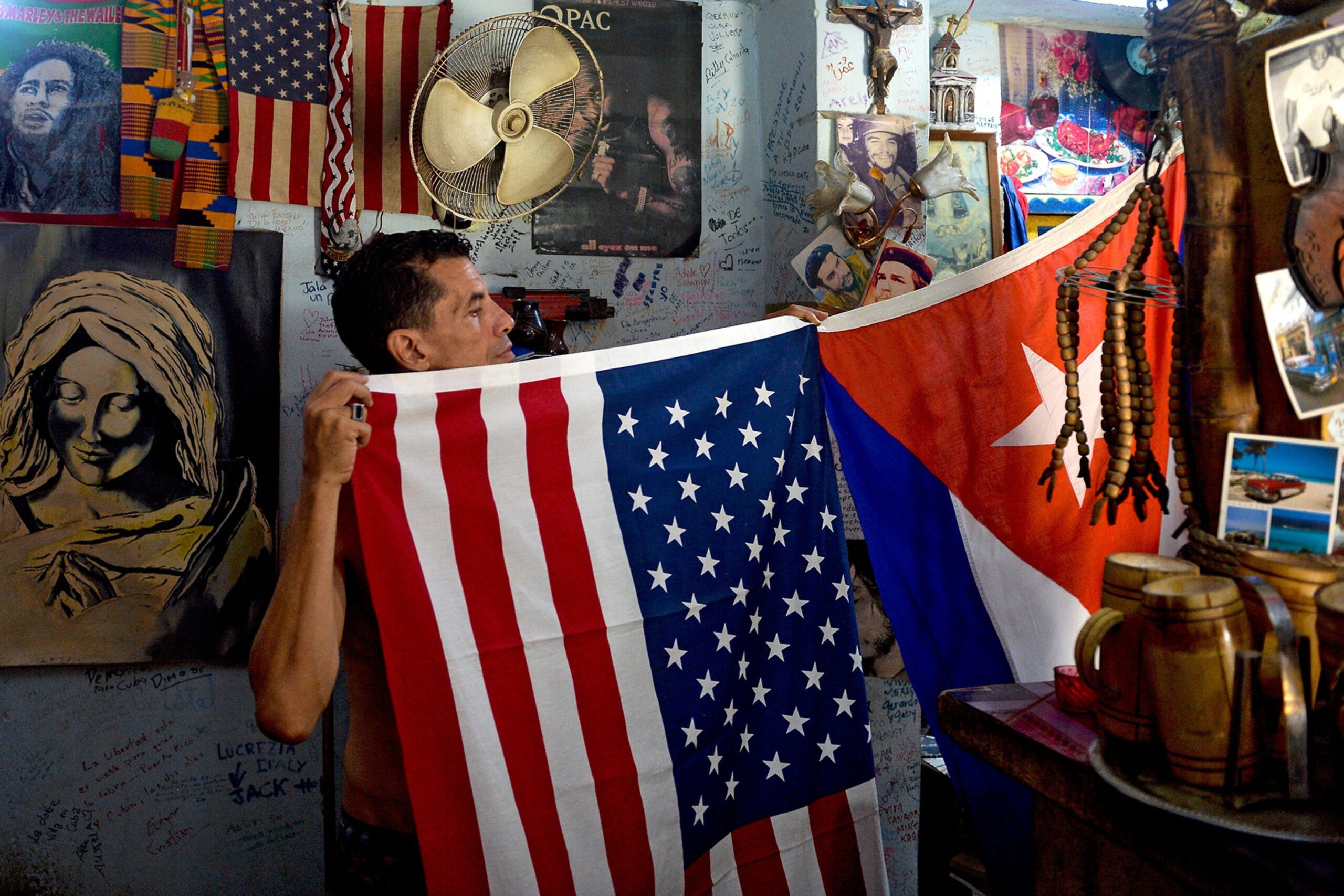James DevittEducation and Social SciencesResearchArts and ScienceNew York City
For NYU historian Ada Ferrer, who has written three books about Cuba, the island nation is much more than the focal point of her scholarship. It is also deeply personal.
Born in Havana, between the Bay of Pigs Invasion and the Cuban Missile Crisis, Ferrer left the country, as an infant, with her mother in the spring of 1963—while many family members remained behind. They joined Ferrer’s father, who had previously been imprisoned by the Castro regime as a suspected counterrevolutionary, in New York City.
“Ours was not the only family torn apart by the revolution,” Ferrer wrote in the New Yorker earlier this year. “Between 1960 and 1962, thousands of children were sent abroad alone, their parents fearing that Fidel Castro’s government would ship them off to the Soviet Union for indoctrination. Young men of military age were forbidden from leaving. Some teen-agers stayed behind when their parents fled, committed to a cause that their families rejected.”
While the experiences and perceptions of many Cuban Americans stem from the 1959 revolution, Ferrer notes that more recent Cuban immigrants may have very different views of their home nation.
“Forty-five percent of Miami Cubans left Cuba after 1995,” she says. “They’re the largest group among all Cuban Americans in Miami. So these are Cubans who didn’t know a Cuba before Fidel Castro. Many of them probably attended government rallies because their work required them to. So they have a very different experience than do older Cuban Americans, and, having left, they tend to be very, very virulently anti-Cuban government.”
The post-1959 lens tends to shape most discussions about Cuba in the United States today, which often focus on Castro or on Cuban Americans’ voting behavior in presidential elections. But that leaves a lot out, for two nations whose relationship stretches all the way back to the American Revolution.
“Cubans raised funds in support of Washington’s army, and soldiers from Cuba fought against the British in North America and the Caribbean,” Ferrer writes of that period in Cuba: An American History (Scribner), her new, comprehensive history of Cuba’s complex ties to the United States. “As the thirteen colonies lost access to other British possessions, the Spanish colony of Cuba became a vital trading partner. In fact, Havana’s storehouse of coveted silver currency helped finance the new nation’s first central bank.”
The book reaches back to cover more than 500 years of Cuba’s history in shedding new light on the country’s relationship with the United States.
With the death of Castro in 2016 and the retirement of his brother, Raul, earlier this year, a new chapter of Cuba’s history is currently being written. During this time of transition, and recent unrest over food and medicine shortages and larger political and economic concerns, NYU News spoke with Ferrer about what careful study of the past can reveal about the present of both her native and adoptive countries.
You note that Cuba’s flag, designed in the mid-19th century and during the United States’ decades-long campaign to annex the island, has remained unchanged. Why has it stayed the same even during so much political change? What does it say, as a symbol?
It was the flag of annexationists, and those were people who wanted to make Cuba part of the United States—they wanted to free it from Spain first and then immediately attach it to the U.S. Plus, the purpose of the annexationists wasn’t just to annex Cuba to the U.S.; it was to annex Cuba to the U.S. as a slave state or maybe as many as three slave states–because it’s a long island. So what that means is that the Cuban flag, which is the ultimate emblem of patriotism, is a symbol that’s tied intimately with the history of U.S. expansionism and the history of slavery. I think people haven’t thought of changing it since the first war of independence in 1868. But for me, it’s a powerful reminder that history can’t be erased—that the highest symbol of Cuban patriotism was built on those two other forces: U.S. expansionism and slavery.
Nationalism has been a very, very strong force in Cuban history since the end of the 19th century. People are attached to the flag, and it remains a central part of Cuban political culture. It has been used everywhere. In political demonstrations, even if it was workers striking, they would go out with these huge flags that they carried. So I think to change it would have been seen as too radical and disruptive.
Poet and independence leader José Martí sought to create a national Cuban identity that transcended race. Yet we can’t ignore that slavery flourished there. “Powerful southerners had long believed that preserving slavery in the South was also about preserving it in Cuba,” you write. How have race and racism affected Cuban politics over the years?
There’s a version of Cuban nationalism that is said to transcend race. However, Cuba has always had a complex history with race, in part because it was a slave society and because it has an unusual history compared to much of Latin America. Most of Latin America became independent in the early 19th century. Cuba didn’t. And for most of the 19th century, an argument was made by the Spanish, and also many White people in Cuba, that Cuba could not be independent of Spain because of the power of slavery and because it had “too large” of a Black population. So they would always use the example of Haiti as a kind of boogeyman: “If we try to become independent, we’ll get another Haiti, and there will be a war.” So race was always used as an argument against making Cuba, independent.
When you did get an independence movement in the late 19th century, it had to deal frontally with that question. So the independence movement did abolish slavery. It also, over the course of the late 1880s and early 1890s, developed a counterargument to that old Spanish assertion. Independence leaders argued that what would make Cuba an exemplary nation was precisely the fact that Whites and Blacks were fighting together for independence. So instead of treating that as an obstacle to nationhood, they treated it as a sign of its capacity for nationhood—that Whites and Blacks could join as one to create a nation. So that was a really powerful argument that became a pillar of Cuban nationalism. But it had this other side to it, which is that if Blacks and Whites became Cuban together in the service of Cuban independence, it made it that much harder for Blacks to organize as Blacks. So when Blacks tried to reclaim rights and to say, “I’m not being treated equally,” White leaders would say “You’re being divisive, we’re all Cuban.”
One can read the history of the Cuban Republic as a struggle to make real that promise from the independence movement that there would be equality. And then when that didn’t happen and Blacks tried to mobilize, they were shut down with these arguments. That happened throughout the whole Republican period (1902-1952). In some ways, it’s also true for the revolutionary period that followed, where initially it seemed like the Cuban revolution would deal with questions of racial disparity, racism, and discrimination. And in some ways, it began to. But the revolutionary government, very soon after taking power in 1959, adopted almost the same line that had dominated the Cuban Republic. So when Black activists in 1959 and 1960 tried to say, “You have to deal with the question of race,” Fidel Castro said, “The revolution has solved the problem of racism.” To talk about racism was not allowed. This is because if the Cuban government says, “We solved it,” and then someone responds, “You haven’t solved it,” it’s accusing the revolution of failing and it’s accusing the revolution of lying.
You write that those “interested in Cuba often make the mistake of thinking too much about Fidel Castro. He was but one revolutionary among many.” Such perspectives amount to reading history “backward,” you argue. What are the consequences of that misreading?
I think that he’s such a larger-than-life figure and he has attracted so much attention, and he’s drawn to himself so much attention, that many Americans think of Castro and the revolution as “The Communist Revolution that took power in 1959, created by Fidel Castro.” And that isn’t correct.
He was one of many revolutionaries—and many revolutionaries were explicitly anti-communist. The revolution was not communist, to begin with, so to call it the “Communist Revolution of ’59” completely misunderstands what that revolution was. It was an anti-dictatorial revolution that grew out of the political currents that were already present in Cuba, many of which were liberal or social-democratic.
Because of what the revolution would become, a lot of Americans don’t realize what the revolution originally was or how incredibly popular it was in the beginning. And it wasn’t popular support for communism—it wasn’t clear at that point that the government would become communist. So in some sense, this discourse, which has been a mainstay of official American discourse towards Cuba, just doesn’t describe what the social experience of that country was over the last 60 years.
Over the summer, in the midst of Cubans’ protests against their government, President Biden said, “The United States is taking concerted action to bolster the cause of the Cuban people.” How is the history of American intervention likely to influence a response today?
Going back to the 19th century, the U.S. has never been a liberating force in Cuban history. So for the U.S. to talk about liberation now just plays right into the hands of the Cuban state. And, now, you see that some of the anti-government protesters, especially among young activists and intellectuals, have been really disappointed with the way the Biden administration has been talking about it. These demonstrators were protesting the government. They consider themselves as forces for change and as forces for democracy. But they reject the U.S. notion of itself as a liberator. I think people in Washington just ignore or just don’t know that history.

